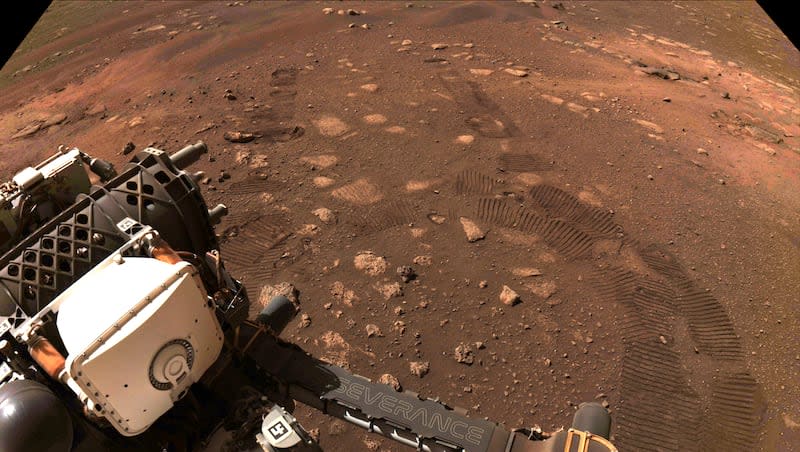NASA seeks new path for Mars Sample Return mission in face of budget cuts

A couple of years ago, NASA scientists said there was really only one way to determine, without a doubt, if samples collected on Mars by the Perseverance Rover that contain organic material also include evidence that life once existed on the Red Planet.
What’s the trick? Get the samples back to an Earth-bound laboratory for deep analysis.
At a Monday press conference, NASA administrator Bill Nelson said congressional budget cuts are forcing the agency to rethink the ambitious plan that was on track to spend $11 billion on a timeline that wouldn’t see any chance of those samples returning to Terra Prime until at least 2040, according to results from an independent review of the program released last September.
Nelson said the agency is now backing off the original approach to Mars sample recovery and instead asking the NASA community to “work together to develop a revised plan that leverages innovation and proven technology.” That effort will include distributing a request for proposals from the broader aerospace industry in an attempt to both cut costs and reduce the sample return timeline.
“Mars Sample Return will be one of the most complex missions NASA has ever undertaken,” Nelson said in a press statement. “The bottom line is, an $11 billion budget is too expensive, and a 2040 return date is too far away.”
“Safely landing and collecting the samples, launching a rocket with the samples off another planet — which has never been done before — and safely transporting the samples more than 33 million miles back to Earth is no small task,” he said. “We need to look outside the box to find a way ahead that is both affordable and returns samples in a reasonable timeframe.”
Right now there are about 30 tubes of samples that Perseverance has gathered since successfully landing on the Red Planet in 2021. The original plan, created in partnership with the European Space Agency, called for the launch of two spacecraft: one a Mars orbiter and the other a Mars lander and retrieval package that also includes a small rocket that would carry samples retrieved from Perseverance off the surface for a rendezvous with the orbiter craft, which would carry the Mars samples back to earth.
And while some elements of that strategy could still be in play, NASA is hoping a re-imagining will include, perhaps, adoption of some existing technology, components and/or equipment to shave billions of dollars off the original budget and a revamped schedule that brings the precious cargo back to Terra Prime in the 2030s.
Nelson said budget reductions approved by Congress as part of the Inflation Reduction Act reduced NASA’s overall budget by $2.5 billion and $1 billion of that was coming off of the agency’s science-focused programming.
“So, we can’t do everything,” Nelson said during Monday’s press conference. “Otherwise, you go and have to cannibalize from other missions.”
Refocusing a visionary mission
Nelson said the new approach will seek to have completed Mars sample return proposals back to NASA by this fall, after which the agency will engage in a review process, along with representatives of the European Space Agency, to find an alternative solution.
And Nelson said he’s optimistic about finding a cheaper, faster route to accomplishing the interplanetary pickup and delivery mission.
“I suspect that if folks at NASA and our contractors and our centers and JPL ... put their minds to it, these are folks that can figure out difficult things,” he said.
The first physical evidence that some form of life may have existed on Mars billions of years ago when the planet’s surface environment was hospitable and included liquid water were first discovered by NASA’s Curiosity Rover nearly a decade ago.
Further evidence of organic compounds and other potential biosignature chemicals that hint at the possibility of some form of life have been unveiled by the Perseverance Rover and its set of more advanced scientific tools. But Perseverance is also equipped to gather and store samples, tasks it has been engaging in since its successful Mars landing in February 2021.

